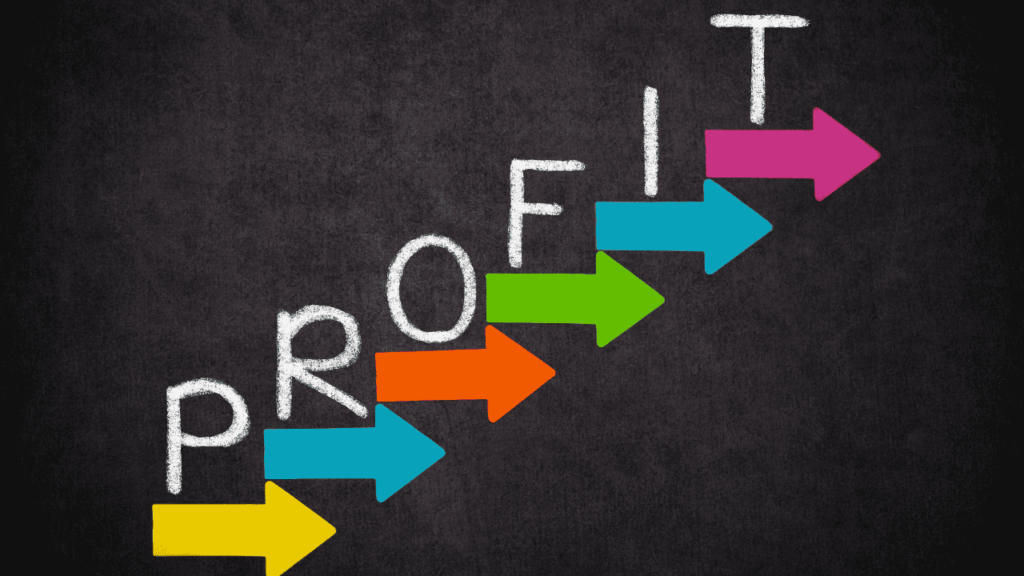
When assessing the financial health of a company, two key metrics often emerge: revenue and cash flow. Revenue is the glamorous headline-grabber, proudly displayed at the top of every income statement. It’s a clear indicator of a company’s ability to generate income by selling products or services. Meanwhile, cash flow, the understated but vital metric, operates quietly in the background, ensuring that day-to-day operations run smoothly.
The debate over which metric better reflects a company’s true financial status is as old as the practice of accounting itself. In this article, we’ll explore the roles of revenue and cash flow, their impact on a company’s performance, and their significance to investors, all while decoding this age-old rivalry.
Table of Contents
Revenue: The Financial Showstopper

Revenue, often referred to as the “top line,” represents the total income a company earns from its core business activities. It’s the metric that captures everyone’s attention, signaling growth, market demand, and a company’s ability to attract customers. Rapid revenue growth is often celebrated as a sign of success, suggesting that a company’s products or services are in high demand.
However, behind this glamorous façade, revenue can sometimes be misleading. Let’s unpack the dynamics:
The Pros of Revenue Growth:
- Market Validation: High revenue figures indicate that customers find value in the company’s offerings.
- Investor Attraction: Strong revenue numbers often attract investors seeking growth-oriented opportunities.
- Brand Credibility: A growing revenue stream enhances the company’s market reputation and competitive position.
The Hidden Challenges:
- Cost of Revenue: Achieving high sales often requires significant upfront investments in areas like marketing, inventory, and distribution.
- Revenue vs. Profitability: High revenue doesn’t always translate to profits. Companies may prioritize market share over margins, sacrificing short-term profitability.
- Credit Sales: Offering products on credit boosts revenue but delays cash inflow, potentially straining liquidity.
For example, imagine a fast-growing e-commerce company boasting record-breaking sales figures. While revenue charts may soar, the cash flow might tell a different story if customers purchase on credit or operational costs skyrocket.
Cash Flow: The Silent Stabilizer

Cash flow, often overshadowed by revenue, measures the actual movement of money in and out of a business. It’s the lifeblood that sustains day-to-day operations, pays bills, and funds future growth. Unlike revenue, cash flow is immune to the distortions of accounting practices or delayed payments.
Types of Cash Flow:
- Operating Cash Flow (OCF): Cash generated from core business activities.
- Investing Cash Flow: Cash used for purchasing assets or investments.
- Financing Cash Flow: Cash movements from borrowing, repaying debt, or issuing equity.
Why Cash Flow Matters:
- Liquidity and Survival: Positive cash flow ensures that a company can meet its financial obligations, such as paying suppliers and employees.
- Financial Flexibility: Healthy cash flow allows businesses to invest in growth opportunities, repay debt, or weather economic downturns.
- Transparency: Cash flow provides a more accurate picture of a company’s financial health, free from accounting gimmicks.
For instance, a business may sell an underutilized property, instantly boosting cash reserves. While this doesn’t indicate core revenue growth, it reflects prudent financial management that ensures operational continuity.
The Interplay Between Revenue and Cash Flow
The relationship between revenue and cash flow is both complex and fascinating. While revenue showcases a company’s earning potential, cash flow reveals its ability to turn those earnings into liquid assets.
Now, let’s delve into situations where these two metrics take different paths:
When Revenue Outpaces Cash Flow:
- High Inventory Costs: Retailers or manufacturers might stockpile inventory to meet demand, tying up cash.
- Delayed Payments: Credit sales boost revenue but delay actual cash collection.
- Expansion Investments: Rapidly growing companies often reinvest heavily in marketing, infrastructure, or hiring, straining cash reserves.
When Cash Flow Surpasses Revenue:
- Asset Sales: Selling non-core assets can generate immediate cash inflow.
- Efficient Operations: Companies with lean operations and low overheads often maintain strong cash flows despite modest sales.
- Deferred Revenue: Businesses offering subscription-based services might receive cash upfront for future services, bolstering cash flow temporarily.
Grasping these intricacies is essential for both management and investors to make informed decisions. A business with stellar revenue growth but negative cash flow might struggle to sustain operations, while one with steady cash flow but flat sales can remain resilient and even thrive.
Cash Flowability: A Vital Metric
“Cash flowability” is the term used to describe a company’s ability to consistently generate positive cash flow. It’s a critical measure of financial health, reflecting a company’s capacity to meet obligations, invest in growth, and return value to shareholders.
Factors Influencing Cash Flowability:
- Sales Volume: Strong sales drive cash inflow but must be accompanied by timely collections.
- Cost Management: Controlling expenses ensures profitability and liquidity.
- Working Capital Efficiency: Effective management of inventory and accounts receivable supports operational cash flow.
- Debt Levels: High debt repayments can drain cash reserves, impacting overall liquidity.
Investors often prioritize cash flowability over revenue growth, as it provides a clearer view of a company’s sustainability and financial resilience.
The Investor’s Perspective: Revenue vs. Cash Flow
From an investor’s standpoint, revenue and cash flow offer distinct insights into a company’s performance:
Revenue’s Role:
- Signals market demand and growth potential.
- Highlights a company’s competitive position.
Cash Flow’s Role:
- Reflects liquidity and operational efficiency.
- Indicates the ability to return value through dividends, buybacks, or debt repayment.
A balanced approach is essential. For instance, high-revenue companies in sectors like technology or e-commerce may struggle with cash flow due to heavy reinvestment in growth. Conversely, stable businesses like utilities often prioritize cash flow, offering consistent dividends to shareholders.
Profits: Reality or Mirage?

Profitability, often viewed as the ultimate goal, doesn’t always reflect financial stability. Here’s why a business can seem profitable on paper but struggle in reality:
Challenges Behind the Scenes:
- High Upfront Costs: Startups and R&D-intensive industries often face substantial initial expenses, delaying profitability.
- Operating Overheads: High fixed costs, such as rent or salaries, can erode margins despite healthy sales.
- Creative Accounting: Aggressive practices like deferring expenses can inflate profits temporarily.
- Economic Volatility: Market downturns can impact revenue and profitability, even for well-managed companies.
Here are some real-world examples of businesses that might look profitable on paper but could be grappling with real financial losses:
- Construction: While construction companies may appear profitable, they face significant risks. Unexpected costs, like bad weather or material shortages, can quickly reduce profits. Additionally, shifts in regulations can have a major impact on the industry.
- Manufacturing: Manufacturing businesses bear high operating expenses, including raw materials, labor, and machinery. They also face stiff competition from foreign manufacturers, which can make it challenging to stay profitable.
- Restaurants: Operating in a high-cost environment, restaurants deal with expenses related to rent, food, and labor. Due to the industry’s thin profit margins, they earn only a small profit on each sale.
- Tech Startups: Tech start-ups often incur large upfront costs for research and development, marketing, and sales. They must also adapt to a fast-evolving industry, making it hard to maintain consistent profitability. This volatility was one of the reasons Warren Buffett hesitated to invest in tech companies in the early 2000s, as the rapid changes in the sector made it difficult to establish a durable economic moat.
- Retail: Retail stores face substantial operating costs, such as rent, inventory, and labor. Competing with online retailers adds an extra challenge, further straining profitability.
Conclusion: A Balanced View
Both revenue and cash flow are indispensable in evaluating a company’s financial health. Revenue is the engine that drives growth and market presence, while cash flow ensures sustainability and financial resilience. Together, they offer a holistic view of a company’s performance.
For investors, the key takeaway is to analyze both metrics in tandem:
- Revenue: Understand the drivers of growth and their sustainability.
- Cash Flow: Assess liquidity, operational efficiency, and the ability to generate returns.
Ultimately, while revenue highlights potential, cash flow reveals reality. In a world where profitability can be a mirage, cash flow remains the most reliable measure of a company’s true financial health. Whether you’re an experienced investor or an aspiring entrepreneur, understanding how to balance revenue and cash flow is fundamental to making sound financial decisions.
You can check out my other article on how beginner investors can select stocks by adopting certain easy-to-do steps.
Do connect with me on LinkedIn, where I share valuable insights on personal finance, money management, investments, and more.





